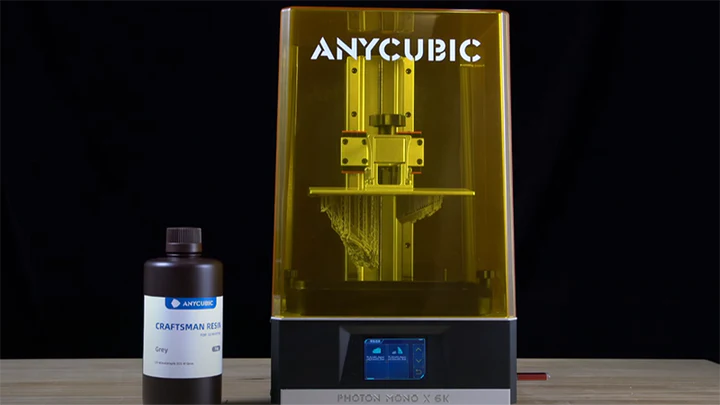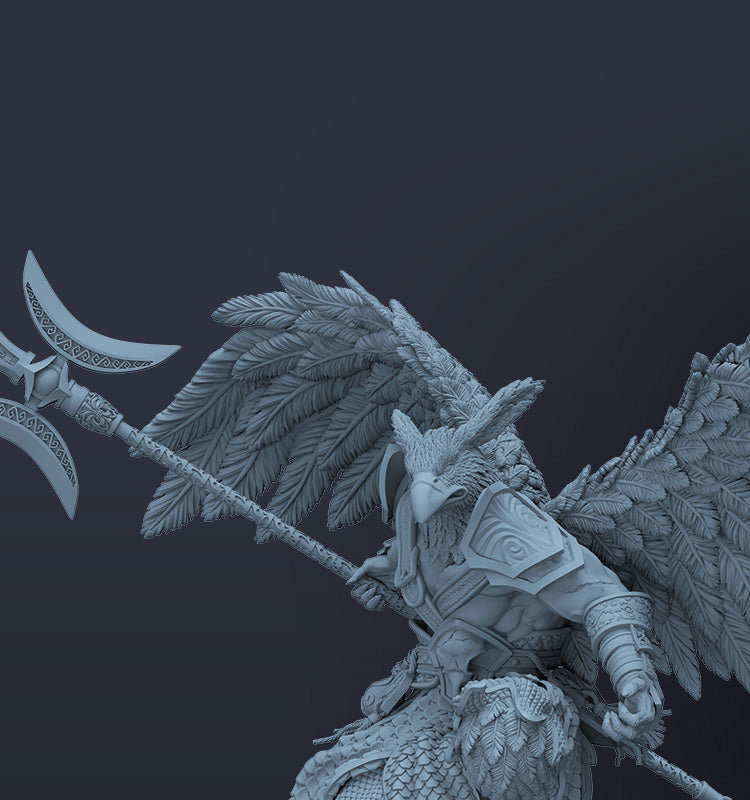Resin printers are often chosen by 3D printer enthusiasts as desktop-level 3D printers. There are different types of resin 3D printers, relying on three different technologies: SLA, MSLA, and DLP. However, all resin printers are based on a principle: the light source contacts the liquid resin, and prints the model through light-curing reaction. Resin printers are often used to print delicate models, even small miniatures, which can be rendered in extremely perfect detail. This is one of the attractions of resin printing. What is the difference between SLA and MSLA? In this article, we will describe what is the differences between the first two technologies, the uses, and how the printers work.

Characteristics of SLA and MSLA Technologies: What is SLA and MSLA?
Stereolithgraphy (SLA) is one of the commonly used technologies in 3D printing. SLA technology was patented in 1986, earlier than FDM technology. It is also one of the most widely used 3D printing technologies. The material is photosensitive resin, which is cured by ultraviolet laser to complete the printing process. SLA resin printing is characterized by the ability to achieve very precise model fabrication. For parts with very high dimensional accuracy and complex details, the post-processed SLA rein model has a very smooth surface finish, which is difficult to achieve with FDM printing.
MSLA is an improved form of SLA printing technology, which is more commonly used in industrial-grade 3D printers, but MSLA is more adaptable to consumer-grade 3D printers and market. MSLA technology can meet the printing needs of 3D printing enthusiasts, and the price of MSLA printer is more affordable.
SLA uses a laser, the computer controls the laser beam, and the resin that touches the laser will be cured. SLA printing requires the laser to contact the resin point by point to complete the model printing. Different with SLA printing, MSLA uses an ultraviolet LED array and LCD screen. The LCD screen selectively lets the light source pass through the mask and cures the resin layer by layer. The efficient of MSLA is higher.
SLA vs. SLA: Comparing Resin 3D Printers

How Does SLA 3D Printing Work?
SLA (Stereolithography) 3D printer technology uses laser light to irradiate photosensitive resin, similar to FDM, and the molding process is all tracks. According to the G code generated by the model slice, the laser head scans each layer of the model slice surface sequentially from point to surface to line. Photosensitive resin irradiated with laser light cures rapidly. The laser generates an oscillating mirror through the laser, is reflected sequentially by the mirrors in the two vertical directions of XY, scans at high speed and then irradiates the resin surface.
How does MSLA 3D printing work?
MSLA is short for Masked Stereolithography. In the photo-curing process, an LCD screen is used for masking and an LED matrix is used as a light source to selectively utilize UV light to cure the resin. In this way, the hardened liquid polymer builds the desired structure layer by layer.

Accuracy of SLA Printing and MSLA Printing
The accuracy of 3D printing depends on many factors and it is not a perfect process. Different 3D printing technologies also achieve different model accuracy. FDM generally cannot achieve very high-precision printing, nor can it print out the details of small-sized models. In this regard, SLA and MSLA technologies are better than FDM. If you compare SLA and MSLA, generally speaking, the printing accuracy of SLA is higher, because SLA printing uses laser beams to solidify and build model point by point, and the accuracy of SLA printing can be said to be the highest level.

Printing Speed
The printing speed of SLA is limited by the moment of the laser beam. According to the trajectory of the g-code, the printer must touch each point with the laser and irradiate the resin to complete the curing. MSLA printer use a UV light source to expose and an LCD screen mask to cure the entire layer at once. In terms of speed, MSLA will win in most cases.
The speed difference is even more pronounced when you choose to print multiple models simultaneously on the build plate. MSLA printers cure the resin layer by layer, so printing several models at a time takes the same time as printing one model at a time. For MSLA printers, it is the number of layers of the sliced model that affects the printing time.




